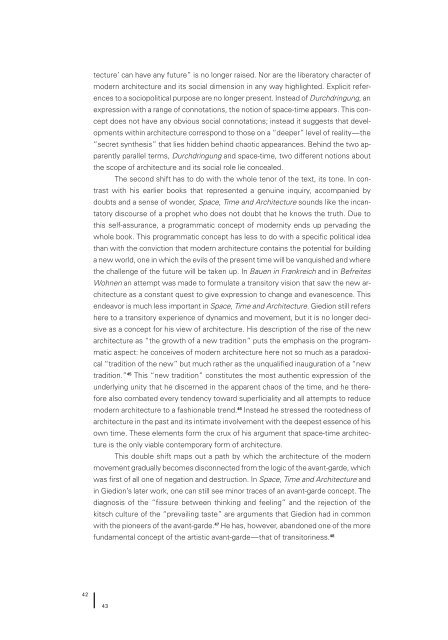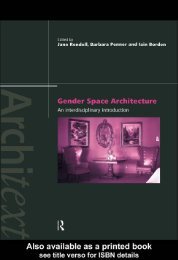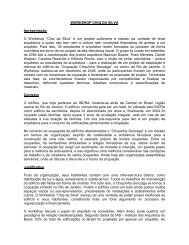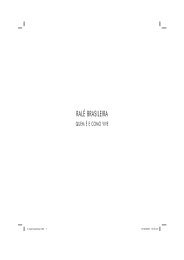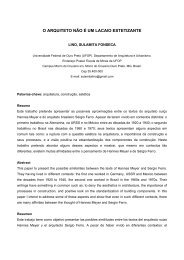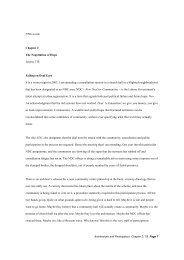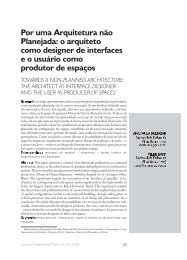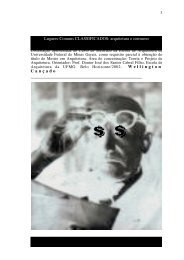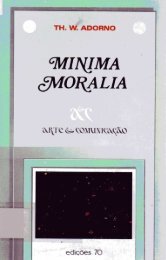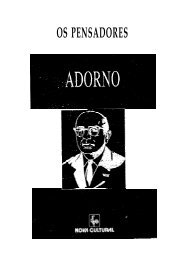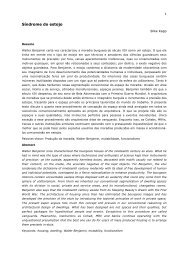Architecture and Modernity : A Critique
Architecture and Modernity : A Critique
Architecture and Modernity : A Critique
Create successful ePaper yourself
Turn your PDF publications into a flip-book with our unique Google optimized e-Paper software.
42<br />
tecture’ can have any future” is no longer raised. Nor are the liberatory character of<br />
modern architecture <strong>and</strong> its social dimension in any way highlighted. Explicit references<br />
to a sociopolitical purpose are no longer present. Instead of Durchdringung, an<br />
expression with a range of connotations, the notion of space-time appears. This concept<br />
does not have any obvious social connotations; instead it suggests that developments<br />
within architecture correspond to those on a “deeper” level of reality—the<br />
“secret synthesis” that lies hidden behind chaotic appearances. Behind the two apparently<br />
parallel terms, Durchdringung <strong>and</strong> space-time, two different notions about<br />
the scope of architecture <strong>and</strong> its social role lie concealed.<br />
The second shift has to do with the whole tenor of the text, its tone. In contrast<br />
with his earlier books that represented a genuine inquiry, accompanied by<br />
doubts <strong>and</strong> a sense of wonder, Space, Time <strong>and</strong> <strong>Architecture</strong> sounds like the incantatory<br />
discourse of a prophet who does not doubt that he knows the truth. Due to<br />
this self-assurance, a programmatic concept of modernity ends up pervading the<br />
whole book. This programmatic concept has less to do with a specific political idea<br />
than with the conviction that modern architecture contains the potential for building<br />
a new world, one in which the evils of the present time will be vanquished <strong>and</strong> where<br />
the challenge of the future will be taken up. In Bauen in Frankreich <strong>and</strong> in Befreites<br />
Wohnen an attempt was made to formulate a transitory vision that saw the new architecture<br />
as a constant quest to give expression to change <strong>and</strong> evanescence. This<br />
endeavor is much less important in Space, Time <strong>and</strong> <strong>Architecture</strong>. Giedion still refers<br />
here to a transitory experience of dynamics <strong>and</strong> movement, but it is no longer decisive<br />
as a concept for his view of architecture. His description of the rise of the new<br />
architecture as “the growth of a new tradition” puts the emphasis on the programmatic<br />
aspect: he conceives of modern architecture here not so much as a paradoxical<br />
“tradition of the new” but much rather as the unqualified inauguration of a “new<br />
tradition.” 45 This “new tradition” constitutes the most authentic expression of the<br />
underlying unity that he discerned in the apparent chaos of the time, <strong>and</strong> he therefore<br />
also combated every tendency toward superficiality <strong>and</strong> all attempts to reduce<br />
modern architecture to a fashionable trend. 46 Instead he stressed the rootedness of<br />
architecture in the past <strong>and</strong> its intimate involvement with the deepest essence of his<br />
own time. These elements form the crux of his argument that space-time architecture<br />
is the only viable contemporary form of architecture.<br />
This double shift maps out a path by which the architecture of the modern<br />
movement gradually becomes disconnected from the logic of the avant-garde, which<br />
was first of all one of negation <strong>and</strong> destruction. In Space, Time <strong>and</strong> <strong>Architecture</strong> <strong>and</strong><br />
in Giedion’s later work, one can still see minor traces of an avant-garde concept. The<br />
diagnosis of the “fissure between thinking <strong>and</strong> feeling” <strong>and</strong> the rejection of the<br />
kitsch culture of the “prevailing taste” are arguments that Giedion had in common<br />
with the pioneers of the avant-garde. 47 He has, however, ab<strong>and</strong>oned one of the more<br />
fundamental concept of the artistic avant-garde—that of transitoriness. 48<br />
43


